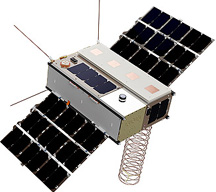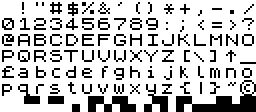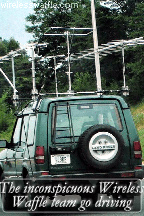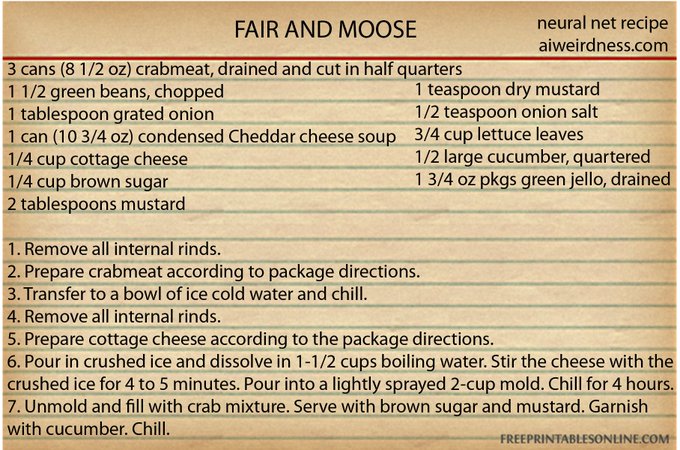There are currently over 100 satellites which transmit (either as their downlink, or as a beacon) in the 70 cm amateur band. The frequency range 432 - 438 MHz is internationally allocated to the Earth Exploration Satellite Service on a secondary basis, however most of the satellites generally use the amateur satellite allocation of 435 - 438 MHz.
Permission to use the amateur frequencies is given by footnote 5.282 of the frequency allocation table in the ITU Radio Regulations, which states:
 Wireless Waffle wanted to know if there was a particular hotspot within this frequency range where the majority of satellties were clustered, which would make it easier to set up a software radio (SDR) to search for these fleeting signals.
Wireless Waffle wanted to know if there was a particular hotspot within this frequency range where the majority of satellties were clustered, which would make it easier to set up a software radio (SDR) to search for these fleeting signals.
A bit of digging revealed a file containing all of the frequencies used by these satellites and some deft work with Excel formulas then revealed the answer to the question. And the answer is that the majority use frequencies between 437.2 and 437.6 MHz. Of the 176 active satellites frequencies analysed, 100 (or 57%) use frequencies in this range. So now you know and can sleep more soundly in your bed!
Permission to use the amateur frequencies is given by footnote 5.282 of the frequency allocation table in the ITU Radio Regulations, which states:
In the bands 435-438 MHz, 1 260-1 270 MHz, 2 400-2 450 MHz, 3 400-3 410 MHz (in Regions 2 and 3 only) and 5 650-5 670 MHz, the amateur-satellite service may operate subject to not causing harmful interference to other
services operating in accordance with the Table...
 Wireless Waffle wanted to know if there was a particular hotspot within this frequency range where the majority of satellties were clustered, which would make it easier to set up a software radio (SDR) to search for these fleeting signals.
Wireless Waffle wanted to know if there was a particular hotspot within this frequency range where the majority of satellties were clustered, which would make it easier to set up a software radio (SDR) to search for these fleeting signals.A bit of digging revealed a file containing all of the frequencies used by these satellites and some deft work with Excel formulas then revealed the answer to the question. And the answer is that the majority use frequencies between 437.2 and 437.6 MHz. Of the 176 active satellites frequencies analysed, 100 (or 57%) use frequencies in this range. So now you know and can sleep more soundly in your bed!
add comment
( 2298 views )
| permalink
| 



 ( 2.7 / 991 )
( 2.7 / 991 )




 ( 2.7 / 991 )
( 2.7 / 991 )
Wednesday 1 April, 2020, 12:58 - Much Ado About Nothing
Posted by Administrator
An ultra-geeky and totally un-wireless-related post today...Posted by Administrator
You may be aware that as well as running the Wireless Waffle web-site, we also run the Short-Wave.Info web-site. Amazingly, the short-wave site has now had over 27 million visitors. The software is updated from time-to-time to improve the performance or, in the most recent update, to make the map look nicer!
As a result of updating the map software routine, the question of the font used to print the details along the bottom of the image raised itself. For a while this had used a font called 'DejaVu Sans'. However, it seemed more fun if the font could be more interesting and the question arose as to whether it might be possible to use the font that was originally deployed in the ZX Spectrum.
 The original ZX Spectrum font uses 8 by 8 pixel blocks (as shown on the right) and isn't that pretty by today's standards, most likely as it is monospace, and as for the majority of characters (apart from the copyright sign) the grid of pixels actually used is only 6 wide by 6 high. This leaves a lot of whitespace around the pixels.
The original ZX Spectrum font uses 8 by 8 pixel blocks (as shown on the right) and isn't that pretty by today's standards, most likely as it is monospace, and as for the majority of characters (apart from the copyright sign) the grid of pixels actually used is only 6 wide by 6 high. This leaves a lot of whitespace around the pixels.The Short-Wave.Info web-site is written in php, in which there is a function called 'imagestring'. This writes a string of text onto an image and as well as using internal fonts, can also use 'GD' fonts. If the ZX Spectrum character set existed as a GD font file, it would be possible to write text using it and this function.
After some time conducting a web-search, no evidence of a GD version of the Spectrum fonts appeared and so we created one of our own! The image below is now how the bottom of the maps on the Short-Wave.Info web-site looks.

Look at the shiny ZX Spectrum font letters! If you are equally geeky, and also increasingly driven to doing mad things by the current global pandemic lockdown, Wireless Waffle is happy to make the font available for anyone who wants it. Simply download the ZX Spectrum GD font and using 'imageloadfont' you are on your way.
Join us next time on Wireless Waffle, when we share some equally lockdown crazy ideas such as:
- how to make wholesome lard-free bread using old £20 notes and a nail file,
- simulating a Spanish beach holiday with a wet towel and some curdled milk, and
- exciting methods for igniting 5G base stations that are emitting coronavirus.
Car journeys can be long and laborious, and, in many cases, just plain boring. However, for the avid radio DXer, they can also be an excellent opportunity to try and receive radio signals from far afield. This is especially the case for journeys that either run close to the sea (where tropospheric propagation may enhance distance reception), or over hills and mountains (where the elevated position of the receiver may increase line-of-sight). Further, many car radios are both sensitive and selective, making them great receivers to eke out weak signals.
 On a recent car journey across the UK, for example, Wireless Waffle was able to add Omroep Zeeland to the FM DX Logbook, despite radio reception conditions being what can only be described as 'as flat as the mountains of the Netherlands'. We thought, though, that it might be interesting to share our experiences of how a car journey can be turned into a DX-pedition (as they are known), safely and easily, as well as some very intriguing and unusual results.
On a recent car journey across the UK, for example, Wireless Waffle was able to add Omroep Zeeland to the FM DX Logbook, despite radio reception conditions being what can only be described as 'as flat as the mountains of the Netherlands'. We thought, though, that it might be interesting to share our experiences of how a car journey can be turned into a DX-pedition (as they are known), safely and easily, as well as some very intriguing and unusual results.
Playing around with your car radio whilst driving is probably a bad idea, and not that safe either, so the best thing to do is to tune to just a single frequency and see what crops up. How do you choose which frequency to tune to? In the example of Omroep Zeeland above, it was 87.9 MHz. This frequency is not used by any FM transmitters in the UK (check the list at frequencyfinder.org.uk) and as such, any transmissions you do hear are either going to be pirate radio stations, or iTrip type devices (more of which later). Many of the frequencies at the bottom end of the FM band including 87.8 and 87.6 are also good candidates but there may be others, depending on which area you live in (105.0 and 105.1 are also relatively ununsed in much of the UK).
 On these 'empty' frequencies what you will hear most of the time is 'ssssssshhh' (a.k.a. white noise). If there are others travelling with you on the journey, this can be extremely annoying, so this is a sport best played alone. However, from time to time, this noise will be punctuated by snippets of speech or music (which for a non radio funster, can be even more annoying than the noise).
On these 'empty' frequencies what you will hear most of the time is 'ssssssshhh' (a.k.a. white noise). If there are others travelling with you on the journey, this can be extremely annoying, so this is a sport best played alone. However, from time to time, this noise will be punctuated by snippets of speech or music (which for a non radio funster, can be even more annoying than the noise).
If you get enough speech or music to be able to identify the station, or (on occasion) get a signal for long enough, and strong enough, for RDS to appear, bingo, you've just landed yourself a DX catch. Even catching the language of the station and the style of programming may, in some cases, be sufficient to lead to an identification, especially if there are only a few stations in that language on a given frequency.
This is how Omroep Zeeland was identified. The language heard was clearly dutch, and it was a speech based program with occasional oldies music. According to fmscan.org, the following FM stations are within tropospheric range on a 'flat' band (i.e. a few 100 km at most), operate on 87.9 MHz, and are in the dutch language: There are no dutch speaking stations in Belgium on 87.9 and no other countries that speak dutch! Omroep Zeeland is a speech and oldies style station, where as Radio 10 is a music based station and although it plays oldies, it has far less speech content. Thus, identification of the snippets heard is relatively straightforward.
There are no dutch speaking stations in Belgium on 87.9 and no other countries that speak dutch! Omroep Zeeland is a speech and oldies style station, where as Radio 10 is a music based station and although it plays oldies, it has far less speech content. Thus, identification of the snippets heard is relatively straightforward.
One thing that did crop up whilst driving around listening to 87.9 and 87.5, was the number of strong signals that popped up with a strange variety of content from stories being read, to asian music and hip-hop. Whilst it would be easy to dismiss these as pirate radio stations, the fact that they appeared and disappeared relatively quickly tends to suggest that they were, in fact, 'iTrip' type transmitters connected to people's mobile phones, to allow music to be played on their car radios. These two frequencies are obvious choices for such devices given that they are not used for (legal) broadcasting in the UK.
An additional fun game that you can therefore give a go, is trying to work out which car driver is listening to which material. Who is the hip-hop fan, and who is listening to the x-rated audio book? Give 87.5 a try for this as it's repleat with lots of these iTrip type devices. I know what you are up to EK59 ESX!
 On a recent car journey across the UK, for example, Wireless Waffle was able to add Omroep Zeeland to the FM DX Logbook, despite radio reception conditions being what can only be described as 'as flat as the mountains of the Netherlands'. We thought, though, that it might be interesting to share our experiences of how a car journey can be turned into a DX-pedition (as they are known), safely and easily, as well as some very intriguing and unusual results.
On a recent car journey across the UK, for example, Wireless Waffle was able to add Omroep Zeeland to the FM DX Logbook, despite radio reception conditions being what can only be described as 'as flat as the mountains of the Netherlands'. We thought, though, that it might be interesting to share our experiences of how a car journey can be turned into a DX-pedition (as they are known), safely and easily, as well as some very intriguing and unusual results.Playing around with your car radio whilst driving is probably a bad idea, and not that safe either, so the best thing to do is to tune to just a single frequency and see what crops up. How do you choose which frequency to tune to? In the example of Omroep Zeeland above, it was 87.9 MHz. This frequency is not used by any FM transmitters in the UK (check the list at frequencyfinder.org.uk) and as such, any transmissions you do hear are either going to be pirate radio stations, or iTrip type devices (more of which later). Many of the frequencies at the bottom end of the FM band including 87.8 and 87.6 are also good candidates but there may be others, depending on which area you live in (105.0 and 105.1 are also relatively ununsed in much of the UK).
 On these 'empty' frequencies what you will hear most of the time is 'ssssssshhh' (a.k.a. white noise). If there are others travelling with you on the journey, this can be extremely annoying, so this is a sport best played alone. However, from time to time, this noise will be punctuated by snippets of speech or music (which for a non radio funster, can be even more annoying than the noise).
On these 'empty' frequencies what you will hear most of the time is 'ssssssshhh' (a.k.a. white noise). If there are others travelling with you on the journey, this can be extremely annoying, so this is a sport best played alone. However, from time to time, this noise will be punctuated by snippets of speech or music (which for a non radio funster, can be even more annoying than the noise). If you get enough speech or music to be able to identify the station, or (on occasion) get a signal for long enough, and strong enough, for RDS to appear, bingo, you've just landed yourself a DX catch. Even catching the language of the station and the style of programming may, in some cases, be sufficient to lead to an identification, especially if there are only a few stations in that language on a given frequency.
This is how Omroep Zeeland was identified. The language heard was clearly dutch, and it was a speech based program with occasional oldies music. According to fmscan.org, the following FM stations are within tropospheric range on a 'flat' band (i.e. a few 100 km at most), operate on 87.9 MHz, and are in the dutch language:
- Omrope Zeeland, transmitter site: Goes, transmitter power: 15kW
- Radio 10, transmitter site: Vught, transmitter power: 7.9 kW
 There are no dutch speaking stations in Belgium on 87.9 and no other countries that speak dutch! Omroep Zeeland is a speech and oldies style station, where as Radio 10 is a music based station and although it plays oldies, it has far less speech content. Thus, identification of the snippets heard is relatively straightforward.
There are no dutch speaking stations in Belgium on 87.9 and no other countries that speak dutch! Omroep Zeeland is a speech and oldies style station, where as Radio 10 is a music based station and although it plays oldies, it has far less speech content. Thus, identification of the snippets heard is relatively straightforward.One thing that did crop up whilst driving around listening to 87.9 and 87.5, was the number of strong signals that popped up with a strange variety of content from stories being read, to asian music and hip-hop. Whilst it would be easy to dismiss these as pirate radio stations, the fact that they appeared and disappeared relatively quickly tends to suggest that they were, in fact, 'iTrip' type transmitters connected to people's mobile phones, to allow music to be played on their car radios. These two frequencies are obvious choices for such devices given that they are not used for (legal) broadcasting in the UK.
An additional fun game that you can therefore give a go, is trying to work out which car driver is listening to which material. Who is the hip-hop fan, and who is listening to the x-rated audio book? Give 87.5 a try for this as it's repleat with lots of these iTrip type devices. I know what you are up to EK59 ESX!
Thursday 9 January, 2020, 15:46 - Much Ado About Nothing
Posted by Administrator
Wireless Waffle may appear to have gone quiet over the last few months, however this is because we have been working on a very major Artificial Intelligence (AI) programme to automate the writing of articles for the site.Posted by Administrator
Being a new decade, in 2020, with the advent of AI and neural nets, it is now possible for computers to author text for articles such as this. Take, for example, this excellent recipe for Jello (jelly to those of us in Europe) written by a suitable trained computer-brain.

Once all the internal rinds are removed, and the condensed Cheddar cheese soup is, er, umoulded (though the soup, and various other ingredients, are only in the list of ingredients, not the complete recipe), you can add the onion and brown sugar, and you're good to go.
The Wireless Waffle Automatic Article Author (W2A3) is somewhat more intelligent than the algorithm that wrote the jello recipe. In addition to having a very wide vocabulary, you can select the level of 'complexity' of the article, and the level of 'wirelessness', to have a story written of your own, preferred level of difficulty and technicality. Just select a level from the pull-down menus below and click 'generate' and you're own, personal wireless article will be generated. Try not to spill any lettuce or mustard on it.

